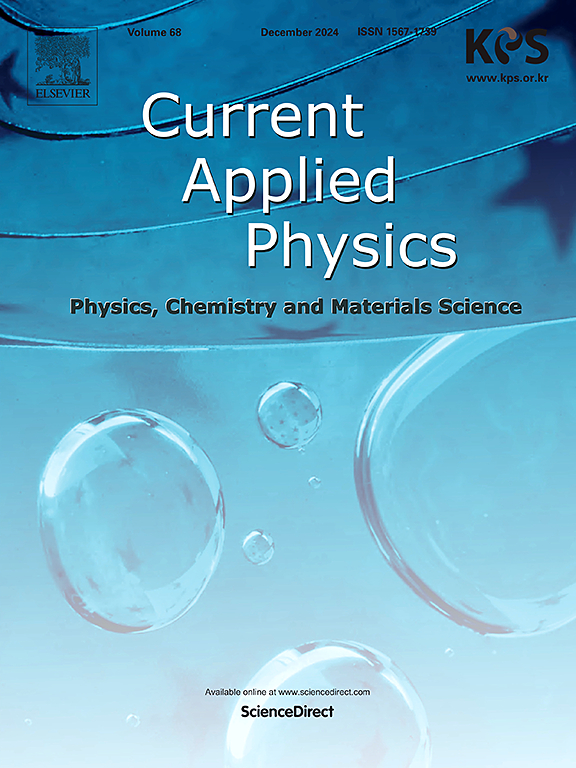Enhancing performance and stability of perovskite solar cells via CsPbBr3 nanocrystal-assisted antisolvent engineering
IF 3.1
4区 物理与天体物理
Q3 MATERIALS SCIENCE, MULTIDISCIPLINARY
引用次数: 0
Abstract
Organic–inorganic halide perovskites show great potential, but their commercialization faces challenges due to instability, requiring controlled synthesis environments. Antisolvent engineering offers a solution by improving the formation of perovskite films under ambient conditions. In this study, CsPbBr3 nanocrystals (NCs) were added to the antisolvent to enhance the performance and stability of perovskite solar cells (PSCs). By optimizing the NC concentration and the mixing ratio of antisolvents, we systematically examined their impact on film deposition. The inclusion of CsPbBr3 NCs improved PSC efficiency, with the highest power conversion efficiency of 19.99 % achieved at 0.01 mg/mL NC concentration. Additionally, NC-added films demonstrated better long-term stability, losing only 12.5 % efficiency after 80 days compared to a 47.1 % loss in pristine films. These results highlight the potential of NC-assisted antisolvent engineering for producing stable, high-performance PSCs.

利用CsPbBr3纳米晶辅助抗溶剂工程提高钙钛矿太阳能电池的性能和稳定性
有机-无机卤化物钙钛矿显示出巨大的潜力,但由于其不稳定,需要可控的合成环境,其商业化面临挑战。反溶剂工程通过改善钙钛矿薄膜在环境条件下的形成提供了一种解决方案。本研究将CsPbBr3纳米晶体(NCs)加入到抗溶剂中,以提高钙钛矿太阳能电池(PSCs)的性能和稳定性。通过优化NC浓度和反溶剂的混合比例,系统地考察了它们对薄膜沉积的影响。CsPbBr3 NCs的加入提高了PSC的效率,在0.01 mg/mL NC浓度下,PSC的功率转换效率最高,达到19.99%。此外,添加nc的薄膜表现出更好的长期稳定性,80天后效率仅下降12.5%,而原始薄膜的效率下降47.1%。这些结果突出了nc辅助抗溶剂工程在生产稳定、高性能psc方面的潜力。
本文章由计算机程序翻译,如有差异,请以英文原文为准。
求助全文
约1分钟内获得全文
求助全文
来源期刊

Current Applied Physics
物理-材料科学:综合
CiteScore
4.80
自引率
0.00%
发文量
213
审稿时长
33 days
期刊介绍:
Current Applied Physics (Curr. Appl. Phys.) is a monthly published international journal covering all the fields of applied science investigating the physics of the advanced materials for future applications.
Other areas covered: Experimental and theoretical aspects of advanced materials and devices dealing with synthesis or structural chemistry, physical and electronic properties, photonics, engineering applications, and uniquely pertinent measurement or analytical techniques.
Current Applied Physics, published since 2001, covers physics, chemistry and materials science, including bio-materials, with their engineering aspects. It is a truly interdisciplinary journal opening a forum for scientists of all related fields, a unique point of the journal discriminating it from other worldwide and/or Pacific Rim applied physics journals.
Regular research papers, letters and review articles with contents meeting the scope of the journal will be considered for publication after peer review.
The Journal is owned by the Korean Physical Society.
 求助内容:
求助内容: 应助结果提醒方式:
应助结果提醒方式:


